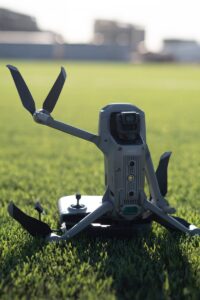Robotic lawn mowers have become one of the most exciting innovations in garden care, offering convenience and consistent results with minimal effort. Yet, as impressive as these machines are, not every garden is the perfect candidate for one. Before investing, it’s important to consider whether your lawn’s size, layout, and terrain are suited to robotic mowing. Understanding these factors can help ensure you choose a model that delivers the best possible performance for your outdoor space.
The first and most obvious factor is lawn size. Robotic mowers come in various capacities, each designed for different garden areas. Smaller models are ideal for compact urban gardens or suburban lawns up to 500 square metres, while high-end versions can cover several thousand square metres with ease. If your lawn falls within the upper end of a mower’s specified range, it’s usually best to choose the next size up to ensure it can handle peak growth periods efficiently. Oversizing slightly allows the mower to maintain the lawn with less strain and more consistent cutting cycles.
The shape of your garden is just as important as its size. Simple, open lawns with few obstacles are ideal for robotic mowers. Their sensors and navigation systems can easily map and cover such spaces, ensuring even mowing patterns and smooth operation. However, many British gardens are irregularly shaped, with multiple zones, trees, flowerbeds, and decorative features. While modern robotic mowers are remarkably good at navigating complex layouts, those with narrow passages, steep banks, or tightly enclosed corners can present challenges. Choosing a model with advanced navigation, GPS mapping, or multi-zone programming can make all the difference in these cases.
Terrain plays another crucial role. Flat or gently sloping lawns are perfect for robotic mowers, allowing them to move smoothly and evenly across the surface. Most models can handle mild inclines — typically up to around 25 or 30 degrees — but anything steeper may cause traction issues or uneven cutting. For gardens with significant slopes or uneven ground, look for models designed with enhanced grip, larger rear wheels, or adaptive drive systems that help maintain stability and precision on challenging surfaces.
Obstacles are another factor to consider. Lawns dotted with trees, garden furniture, ponds, or ornaments will require careful setup to define safe mowing zones. This is usually achieved using a boundary wire that creates a virtual fence, preventing the mower from straying into unwanted areas. Installing the wire properly ensures smooth operation and protects both the mower and your garden features. For households that prefer a simpler setup, some of the latest premium models use satellite-assisted mapping, allowing for wire-free installation and intelligent navigation around objects.
Connectivity and access points can also determine suitability. If your lawn is divided into separate areas or includes pathways, make sure the mower can easily travel between them or be manually relocated. Some models are designed to manage multiple zones autonomously, while others require manual placement in each section. For larger or more intricate gardens, this flexibility becomes essential for consistent results.
Another consideration is grass type and soil condition. Dense, fast-growing grasses may require more frequent mowing, which robotic mowers handle well thanks to their continuous maintenance schedule. However, uneven or soft soil can cause traction issues, particularly after rain. Regularly checking the ground condition and adjusting the mower’s schedule helps prevent unnecessary wear or ruts forming on the lawn.
While robotic mowers are highly adaptable, there are certain situations where they may not be the ideal choice. Extremely uneven lawns with deep dips, exposed roots, or loose gravel areas can be problematic. Similarly, very small gardens with limited access may not justify the investment, as the setup and maintenance might outweigh the convenience gained.
Ultimately, the best lawns for robotic mowers are medium to large in size, relatively open, and moderately even. When matched with the right model and properly installed boundary system, these machines deliver immaculate results without the owner lifting a finger.
For anyone uncertain about whether their garden qualifies, retailers like Garden Machinery Direct can help assess your layout and recommend the most suitable options. By choosing a mower designed for your specific terrain and lawn shape, you can ensure your investment pays off in both performance and peace of mind — turning lawn care into an effortless, year-round achievement.

